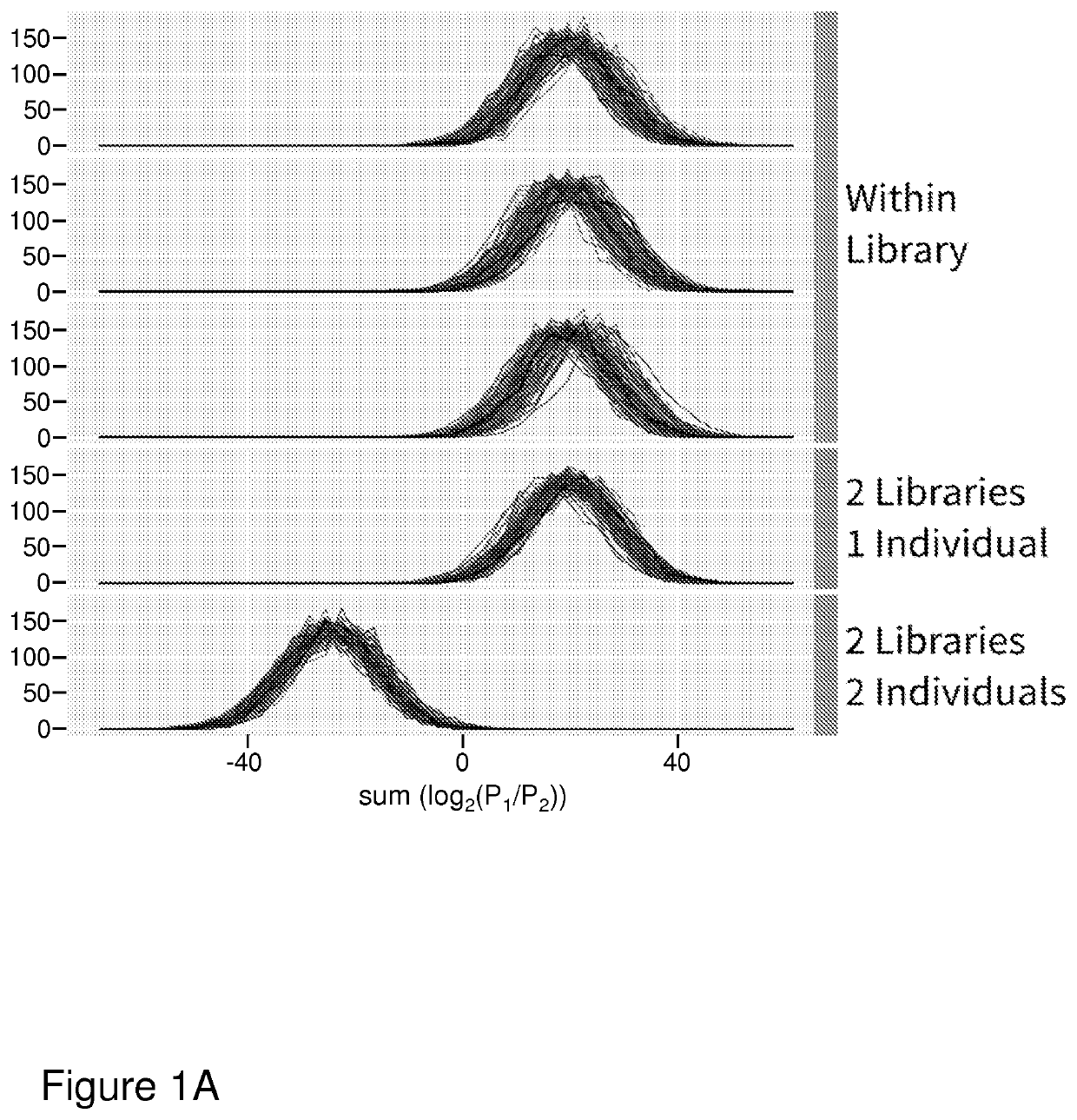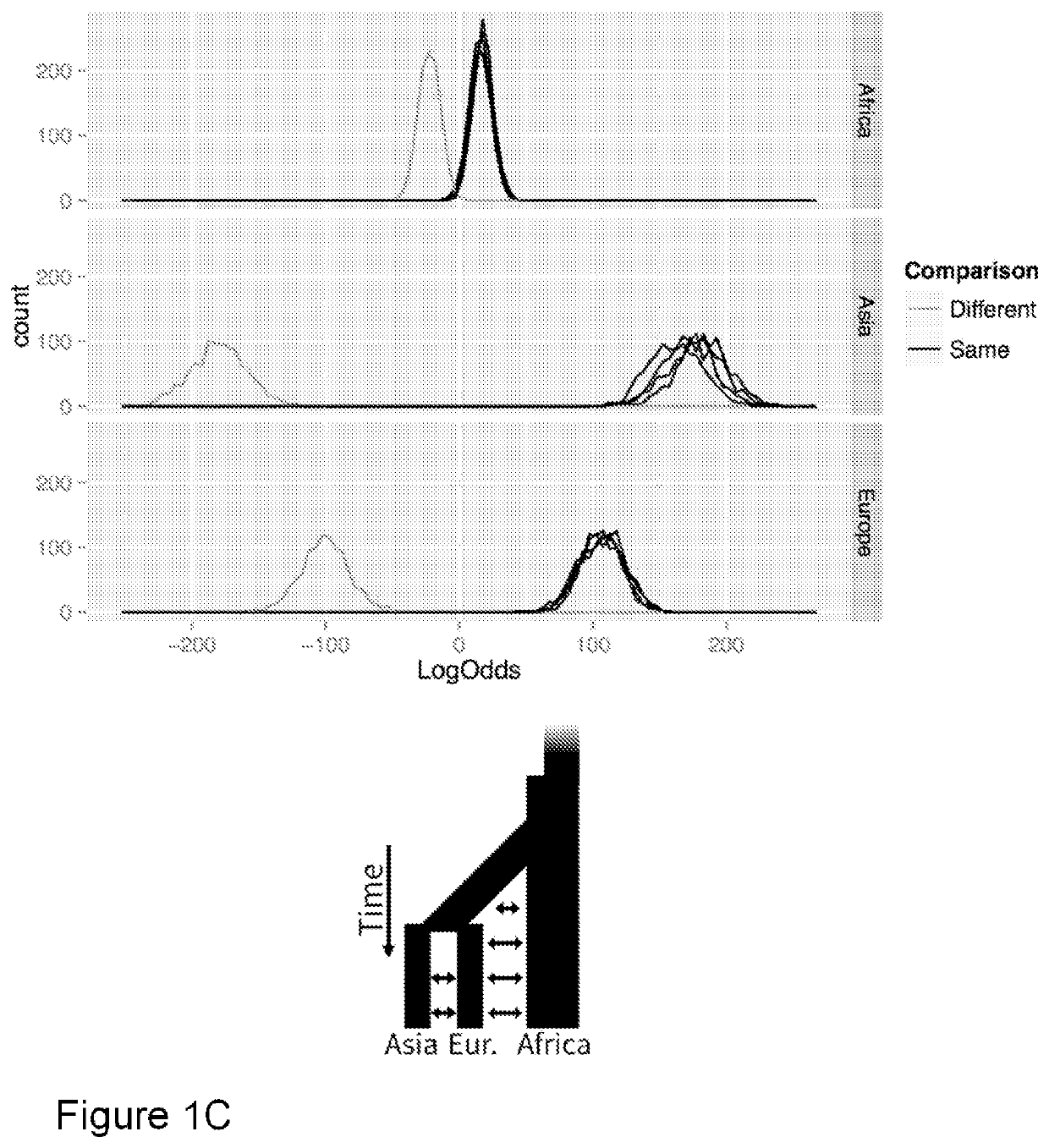Method for determining relatedness of genomic samples using partial sequence information
a technology of partial sequence information and relatedness, applied in the field of dna analysis, can solve the problems of limiting our ability to construct high-coverage shotgun sequencing libraries from historical samples, determining whether two dna samples originate from the same individual, and limiting our ability to construct high-coverage shotgun sequencing libraries
- Summary
- Abstract
- Description
- Claims
- Application Information
AI Technical Summary
Benefits of technology
Problems solved by technology
Method used
Image
Examples
example 1
rom Simulations
[0075]We simulated sets of single allele observations from diploid individuals and panels of reference haplotypes using coalescent simulations to test our method under various demographic scenarios free from observation errors. Under a simple demographic model of a single population of constant size (Ne=10,000), we found our method can consistently distinguish between two single allele observation sets that originate from the same or different individuals (FIG. 1A) when the reference panel and diploid individuals are drawn from the same population. Thus, sets of base observations made from the same diploid individual are distinguishable from those made from different individuals. Genotypes for diploid individuals and a reference panel of haplotypes were simulated under a simple demographic model of a constant effective population size of 10,000. Sets of base observations (libraries) were simulated by drawing random alleles from segregating sites chosen at a rate of 0....
example 2
rom Read Data
[0077]To test our method on extremely low-coverage shotgun sequencing data, we obtained read data from a European male (NA12891) and a European female (NA12892) sequenced as part of Illumina's Platinum Genomes (http(colon / slash slash) www (dot) illumina(dot) com / platinumgenomes / ) from the National Center for Biotechnology Information Sequence Read Archive (http(colon slash slash www(dot) ncbi.nlm.nih.gov / sra / , accession ERR194160 and ERR194161). We sampled reads without replacement to approximate 0.01%, 0.1%, 0.5%, 1.0%, and 5.0%× coverage of the nuclear genome to generate two sets at each coverage level for both individuals. Only the forward read (101 bp) were used from each read pair. Reads were mapped to the human reference genome (hg19) using bwa [13]. Reference panels were constructed using statistically-phased haplotypes from the 1000 Genomes Project phase 1 data [14]. Only biallelic single base substitutions were included in the panels. Base observations were mad...
PUM
 Login to View More
Login to View More Abstract
Description
Claims
Application Information
 Login to View More
Login to View More - R&D
- Intellectual Property
- Life Sciences
- Materials
- Tech Scout
- Unparalleled Data Quality
- Higher Quality Content
- 60% Fewer Hallucinations
Browse by: Latest US Patents, China's latest patents, Technical Efficacy Thesaurus, Application Domain, Technology Topic, Popular Technical Reports.
© 2025 PatSnap. All rights reserved.Legal|Privacy policy|Modern Slavery Act Transparency Statement|Sitemap|About US| Contact US: help@patsnap.com



